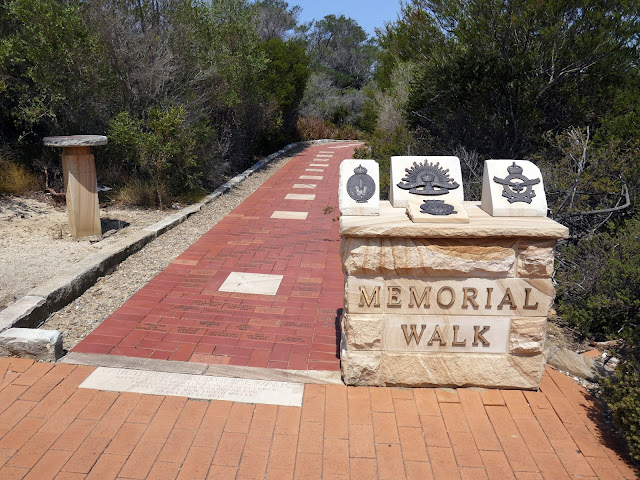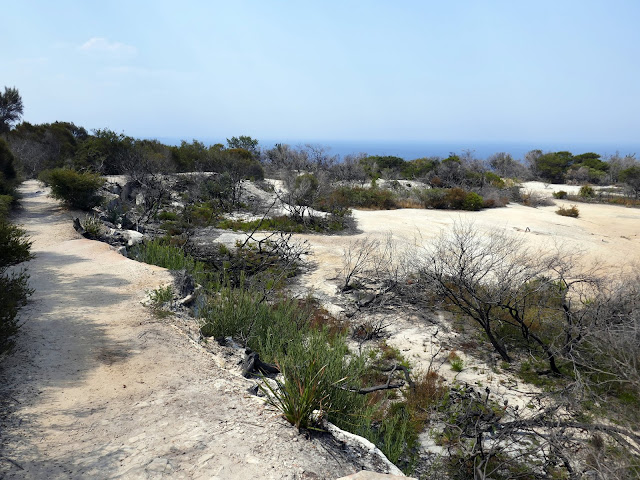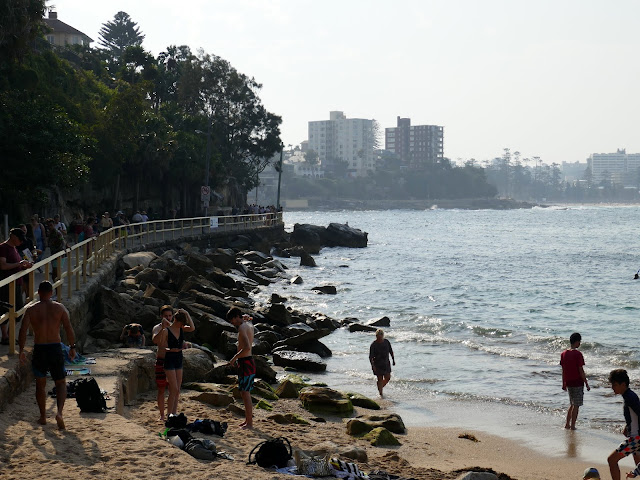This map was created using GPS Visualizer's do-it-yourself geographic utilities.
Please wait while the map data loads...
Please wait while the map data loads...
Route: Manly Wharf, East Manly Cove Beach, East Esplanade, Stuart Street, Little Manly Cove, Little Manly Point, Collins Flat Beach, Collins Beach Track, Collins Beach Road, Barracks Precinct, Memorial Walk, Fairfax Track, Avenue of Honour, Hanging Swamp, Bluefish Drive, Blue Fish Track, Shelly Head, Shelly Beach, Manly
Date: 04/01/2020
From: Manly Wharf
Parking: N/A
Start Point: Manly Wharf
Finish Point: Manly Beach
Region: Sydney
Route length: 6.5miles (10.5km)
Time taken: 04:36
Average speed: 1.3mph
Ascent: 197m
Descent: 184m
Points of Interest: Collins Beach, Barracks Precinct, Fairfax Point, Shelly Beach
Bondi and Manly are arguably Sydney's two most famous beaches. While they are only 10km apart, they sit on either side of the vast entrance to Sydney Harbour. When I arrived in Australia, I harboured an ambition to hike the length of the Sydney Harbour foreshore and the introduction of the Bondi to Manly walking track has facilitated just that.
 |
| The Bondi to Manly branding features the aboriginal depiction of a whale |
Though it was very hot and sunny, the current bushfires which have encircled Sydney are frequently casting a dull haze over the city. Fortunately, in recent weeks, I've managed to time my hikes when the air quality has been ok - there are occasional days when the smoke hangs over the city like an autumnal UK fog and it's best to stay indoors. Today, however, things were not too bad.
I picked up the walk where the Spit to Manly leg finishes, at the Manly ferry wharf overlooking Manly Cove. This is the final stretch and, while the main Manly Beach is a mere 400m away from the wharf, a direct route would miss out the views and bushland of North Head, particularly Fairfax Lookout, which we'll get to later.
 |
| Manly Cove and Manly Cove Beach |
 |
| Cabbage Tree Bay |
 |
| The harbour at Manly |
 |
| Smedley's Point protrudes into the harbour |
 |
| The scorched grass of Little Manly Point |
 |
| Little Manly Point |
 |
| Little Manly Cove |
 |
| Collins Bay |
 |
| Collins Beach Road |
 |
| Collins Beach Road |
 |
| The entrance to North Head |
 |
| The Barracks Precinct |
 |
| The parade ground |
 |
| The parade ground and mess hall |
 |
| North Head sanctuary |
 |
| The North Head boardwalk |
 |
| Banksia bush |
 |
| The view from the Northern Lookout |
 |
| Sydney |
 |
| Sydney from the quarantine Cemetary |
 |
| Third Quarantine Station Cemetary |
 |
| Sydney Harbour |
 |
| Memorial Walk |
 |
| Memorial Walk |
 |
| Memorial to the lives lost in WWI |
 |
| Fairfax Walking Track |
 |
| The cliffs of Blue Fish Point |
 |
| Fairfax Lookout |
 |
| Sydney in the bushfire smoke haze |
 |
| A layer of haze blankets the city |
 |
| WWII gun pit |
 |
| Avenue of Honour |
 |
| The hanging swamp |
 |
| Blue Fish Track |
 |
| The Blue Fish Track |
 |
| The Tasman Sea |
 |
| The hole in the wall |
 |
| Sydney's Northern Beaches |
 |
| A glimpse of the Pacific Ocean |
 |
| Shelly Headland |
 |
| Views from the Shelly Beach walking track |
 |
| Shelly Head Lookout |
 |
| Shelly Beach |
 |
| Marine Parade heads towards Manly |
 |
| Fairly Bower |
 |
| Cabbage Tree Bay Aquatic Reserve |
 |
| Manly Beach |
 |
| !! |
Reaching the beach at Manly brings the epic Bondi to Manly trek to a close. It's an amazing and not-too-difficult means of seeing some of the best that Sydney has to offer.
No comments :
Post a Comment